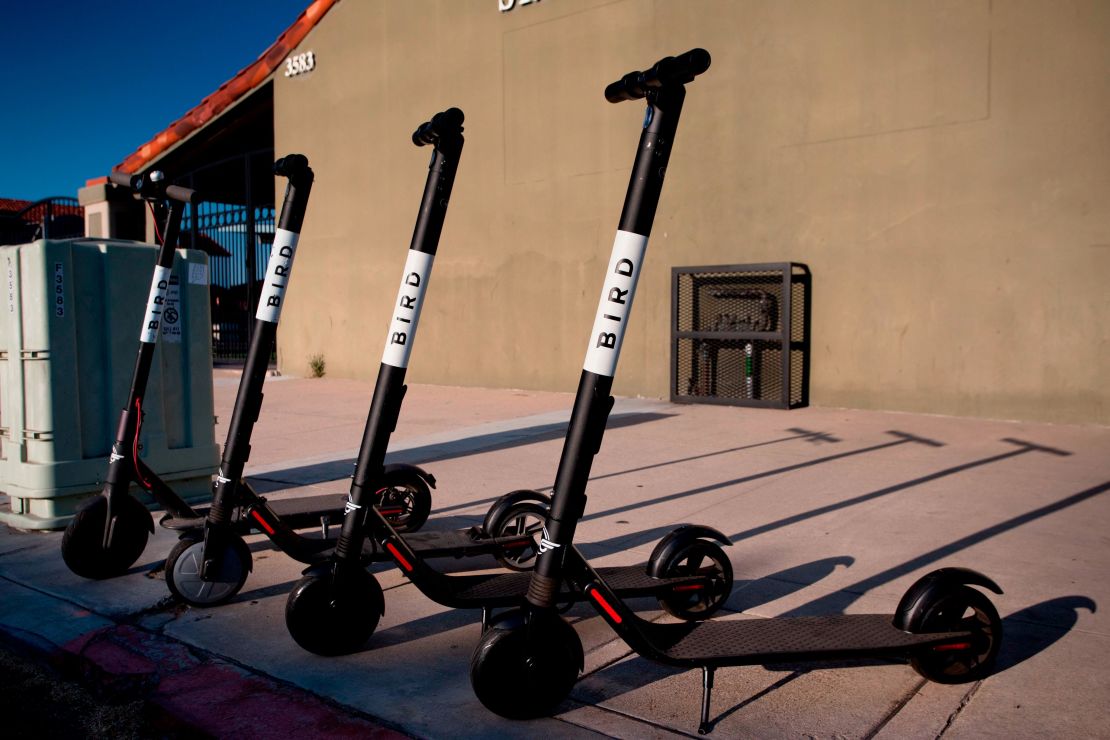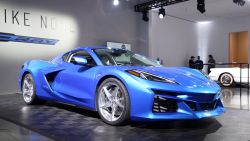A highly anticipated government study of e-scooter safety found especially high injury rates among new riders.
The Centers for Disease Control and Prevention and Texas’ Austin Public Health Department study found that one in three injured riders were hurt on their first trip, and about 63% had ridden nine times or fewer before their injury. The researchers concluded that additional training may be necessary for e-scooter riders.
Electric scooters hit streets nationwide in 2018, proving to be both popular and controversial. Advocates say they offer both an emission-free car alternative in congested cities and serve as a connection to public transit options. Critics claim the e-scooters are unsafe and a public eyesore that block sidewalks and litter public spaces.
E-scooters — which can be rented through apps from companies such as Bird, Lime, Uber and Lyft (LYFT) — are so new that they haven’t been studied extensively. The researchers in Austin believe their study is the first to interview riders about their crashes.
The study was conducted among 190 e-scooter riders who were injured between September and November last year.
The researchers found there was one injury for every 5,000 e-scooter trips. But they caution that the finding underestimates injury rates because they didn’t survey those who were injured and sought medical attention at urgent care facilities or physicians offices, or didn’t seek treatment at all. The researchers relied on emergency room data from nine hospitals and ambulance incident reports.
Nearly half of the injured riders had head injuries, and only one was wearing a helmet. The researchers concluded that helmet use may reduce the risk of head or brain injuries. Meanwhile, broken bones in the arms, wrists and legs were the most common injuries.
Of the interviewed riders, 50% believed that road conditions such as potholes and cracks contributed to their injuries. More than a third said that excessive scooter speed contributed to their crashes, and 19% believed their scooter malfunctioned.
The study also indicated that 10% of injured riders were struck by motor vehicles – the same percentage as those hurt when they hit a curb.
The companies have taken some steps to improve safety. Some of their apps include instructions on how to ride the e-scooters safely.

Some companies have redesigned their scooters with features such as larger wheels to better handle poorly maintained streets. Others have repositioned the batteries on their e-scooters to lower their center of gravity and reduce the likelihood of an e-scooter flipping forward.
Wheels, a Los Angeles-based startup that competes with the e-scooter companies, offers a rentable device that looks like a cross between an e-bike and an e-scooter. The vehicle’s 14-inch wheels are larger than most e-scooter wheels, and it includes a seat designed to lower a rider’s center of gravity.
Wheels is developing a newer model with a helmet attached. It will also include disposable liners to reduce hygiene concerns about sharing a helmet with strangers.
Many e-scooter companies have distributed free helmets to riders. However, the appeal of e-scooters is their convenience, and riders generally don’t carry a helmet with them.
Austin isn’t the first city to study e-scooter safety. A Portland, Oregon, study early this year found that scooter safety risks were similar to other ways of getting around.
Bird, the Santa Monica startup that pioneered scooter-sharing, released its own report this year finding similar risks between bikes and e-scooters.
“This was reported as a big outsize public health crisis and in reality it’s just a reflection of a lot of e-scooter trips happening in a city that previously had none,” Paul White, director of policy and advocacy at Bird, told CNN Business. “We’re not saying we’re done and mission accomplished by any means. We have a lot of work to do, cities have a lot of work to do.”
A series of deadly scooter crashes have grabbed headlines in recent months. In the past seven weeks there have been three hit-and-run deaths in which cars struck and killed e-scooter riders. There have been at least nine deaths on shared e-scooters since the summer of 2018.
























